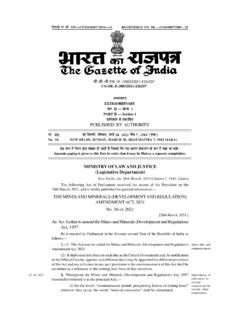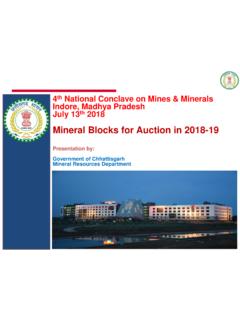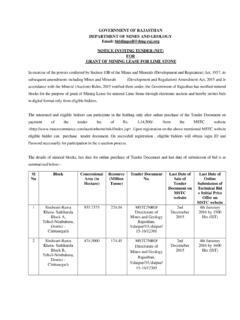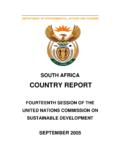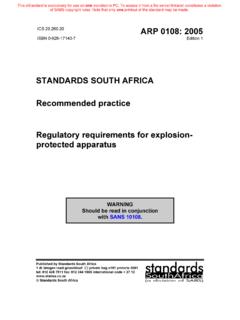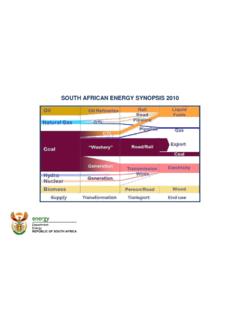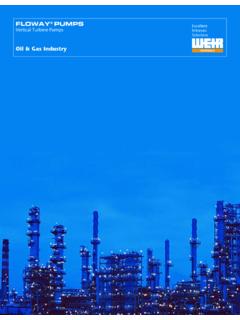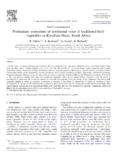Transcription of Exploration and Mining Opportunities in India
1 Exploration and Mining Opportunities in IndiaAn Investor GuideBe part of an exciting high growth economyMinistry of Mines, Government of IndiaAugust 15, 2015 ContentsAbbreviations ..3 Conversion ..3 1. Introduction to India .. Geography .. Political System .. Economy of India ..5 2. Exploration and Mining in India .. Introduction .. Structure of Minerals and Mining Sector .. Exploration in India .. Mineral Resources/Reserves .. Mineral Production ..9 3. Mineral and Mining Sector Legislation in India .
2 Overview .. Legislation .. Mineral Administration and Regulation .. Types of Concessions .. Grant of Mining Grant of Composite License .. Grant of Non-exclusive Reconnaissance Permit (NERP) .. National Mineral Exploration Trust (NMET) .. Indicative Clearances ..15 4. Taxation and Royalties .. Overview .. Direct Taxes .. Indirect Taxes .. Mining Levies .. Other Levies .. Incentives ..18 Appendix ..19 Classification of Minerals in India ..19 Major Minerals ..20 Geology of Indian Subcontinent.
3 22 Geological Setting of Peninsular Region ..22 Geology of Extra-peninsular Area ..23 Metallogenic Map of India ..24 Mineral Provinces ..25 State-wise Details of Mineral Belts/ Terrains within the OGP Areas ..25 State-wise and Mineral-wise Details within the OGP Areas ..27 Mineral-wise Reserves and Resources ..28 Information for the Investors ..31 Important Websites and Links ..3231 | Introduction to IndiaAbbreviationsCLComposite LicenseCRIRSCOC ommittee for Mineral Reserves International Reporting StandardsDMFD istrict Mineral FoundationFDIF oreign Direct InvestmentGDPG ross Domestic ProductGSIG eological Survey of IndiaIBMI ndian Bureau of MinesINRI ndian RupeeITIncome TaxkmkilometremmetreMATM inimum Alternate TaxMCDRM ineral Conservation and Development Rules, 1988 MCRM ineral Concession Rules, 1960 MLMining LeaseMMDRM ines and Minerals (Development & Regulation)
4 Act, 1957 MTMillion TonneNERPNon-Exclusive Reconnaissance PermitNGCMN ational Geo-chemical Mapping ProgrammeNGPMN ational Geo-physical Mapping ProgrammeNMETN ational Mineral Exploration TrustOGPO bvious Geological PotentialSEZS pecial Economic Zonesq. kilometresUNFCU nited Nations Framework ClassificationUSDUS millioncrore10 millionExploration and Mining Opportunities in India41 Introduction to GeographyIndia is the seventh largest country in the world by area, with an area of million square kilo metres (sq.)
5 Km.). The mainland of India extends between latitudes 8 4 and 37 6 north, longi-tudes 68 7 and 97 25 east and measures about 3,214 km from north to south between the ex-treme latitudes and about 2,933 km from east to west between the extreme longitudes. It is bound by the Indian Ocean on the South, the Arabian Sea on the South-West and the Bay of Bengal on the South-East. India shares land borders with Pakistan to the West; China, Nepal and Bhutan to the North-East; and Myanmar and Bangladesh to the East.
6 India has coastline of 7, Political SystemIndia is a federal state organised into 29 states and 7 union territories. India is the world s larg-est democracy governed by the Constitution of India with a bicameral parliamentary form of government. The federal government comprises three branches. Executive the President of India is the Head of the State, while the Prime Minister is the Head of the Government and runs office with the support of the Council of | SnapshotCapitalNew DelhiPopulation1,210 million in million sq.
7 LanguagesOfficial Language HindiEnglish is used for all official purposesCurrencyIndian Rupee ( ` )Time ZoneIndian Standard Time GMT + 05:30 ReligionHinduism (~80%), Islam (~13%), Christianity, Sikhism, Buddhism, Jainism and Domestic Product (at current prices)USD 2,067 billion in 2014*Gross Domestic Product (at purchase power parity)USD 7,393 billion in 2014*GDP per capita(at current prices)USD 1,631 in 2014*GDP per capita(at purchase power parity)USD 5,833 in 2014*Accounting YearApril 1 to March 31*Source.
8 World Bank Legislative The Indian legislature com-prises the Lok Sabha (House of the People) and the Rajya Sabha (Council of States) forming both the Houses of the Parliament. The Rajya Sabha has a maximum of 250 nominated representatives. The Lok Sabha comprises representatives of people elected every five years through universal adult suf-frage. Maximum strength of the Lok Sabha is 552 members and the current strength of the Lok Sabha is Ship of GSI: Samudra Ratnakar51 | Introduction to India Judicial The Supreme Court of India is the apex body of the Indian legal system followed by the High Courts of respective States and subordinate Economy of IndiaThe Indian Rupee (symbol: `, ISO code: INR) is the official currency of India .
9 The exchange rate of Rupee is market determined and the Reserve Bank of India intervenes as and when required to maintain a stable exchange regime ( man-aged float). As per the World Bank, the GDP of India expanded from USD 834 billion (at current prices) in 2005 to USD 2,067 billion in 2014 (at current prices). Whereas on the basis of pur-chasing power parity, the GDP of India expand-ed from USD 3,274 billion in 2005 to USD 7,393 billion in 2014. During the last decade, India witnessed a consistent growth rate above 6% ex-cept in two years due to various macro-econom-ic sovereign debt is classified as invest-ment grade by the following major credit rating agencies.
10 Standard & Poor s: BBB- (Positive Outlook) Fitch Ratings: BBB- (Stable Outlook) Moody s Ratings: Baa3 (Positive Outlook) and GDP per capita at Current Prices andPurchase Power Parity (2005-2014)GDP CurrentGDP PPPGDP per capitaGDP per capita PPPS ource: World Bank024681012200520062007200820092010201 1201220132014 PercentageAnnaul GDP Growth Rate (2005-2014)GDP Growth RateSource: World BankAnnualExploration and Mining Opportunities in India62 Exploration and Mining in IntroductionDuring the last decade, India had witnessed a consistent high growth above 6% mainly due to rapid urbanization that has increased demand for infrastructure and consumer goods.
